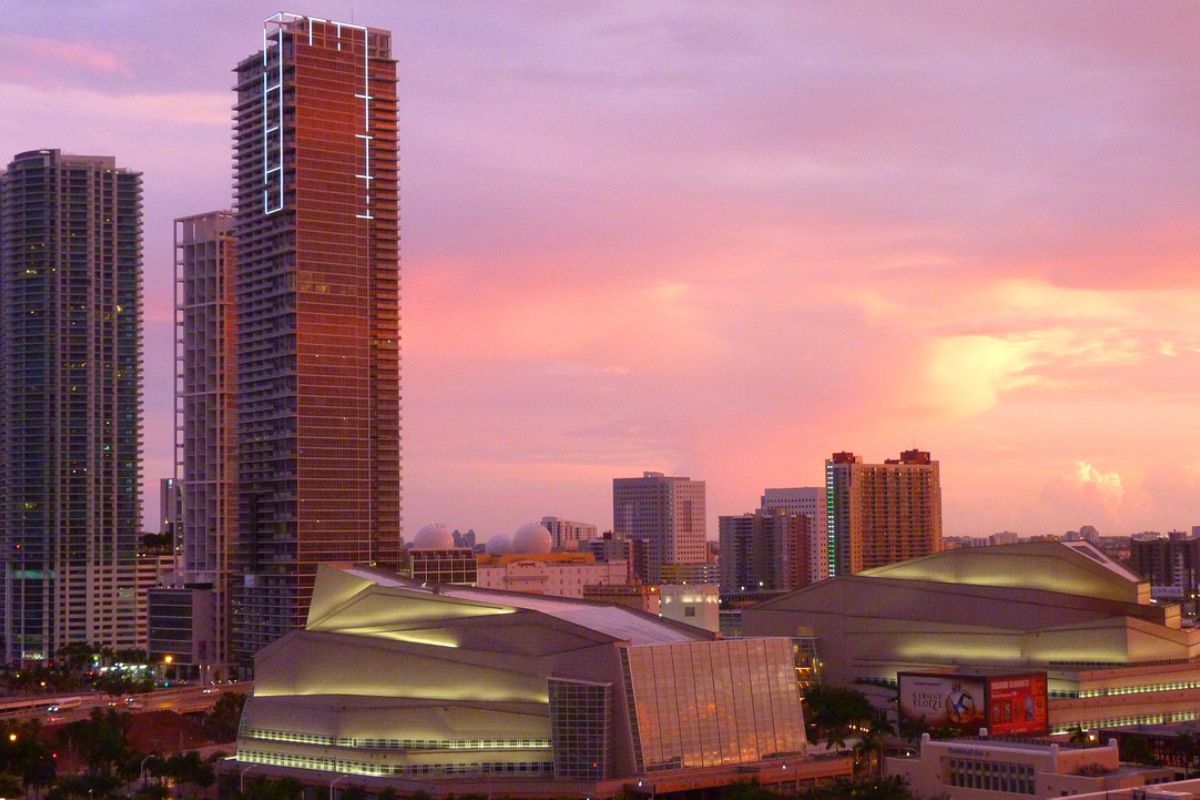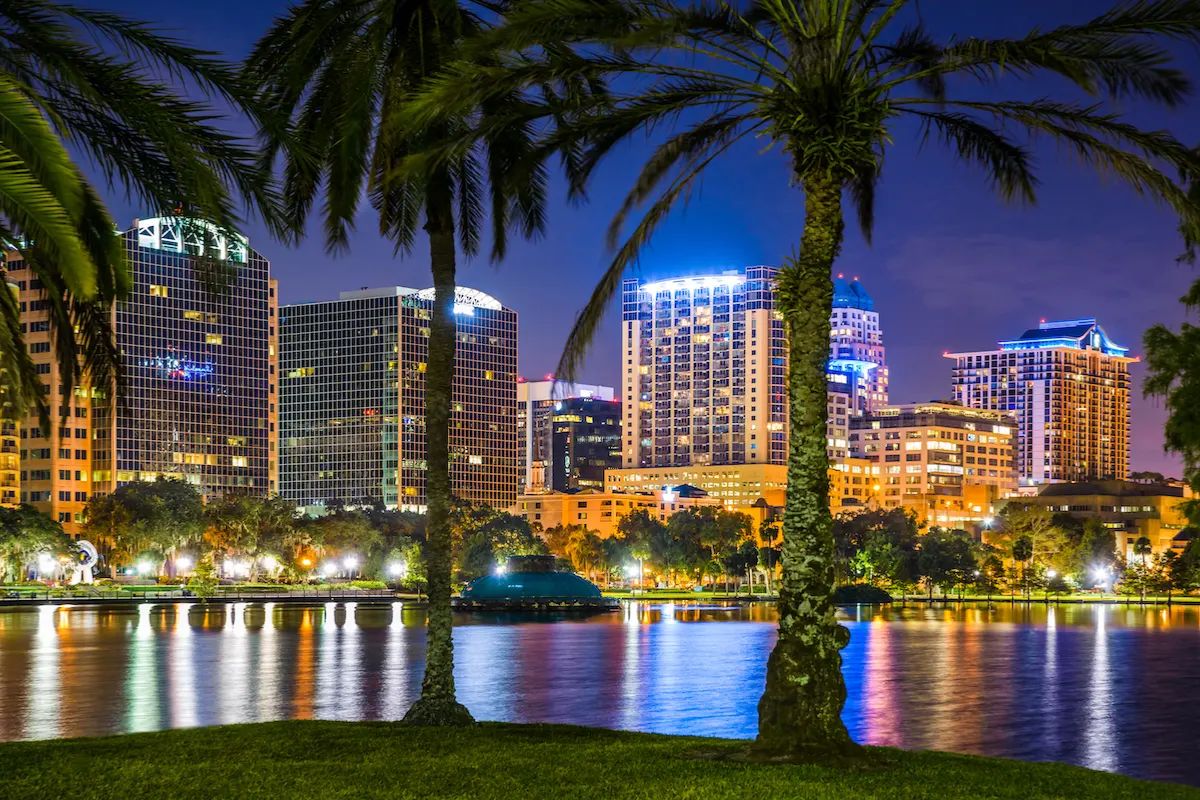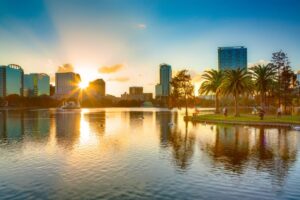Florida, known as the Sunshine State, is famous for its warm weather, stunning beaches, and vibrant cities. While many visitors flock to its coastal resorts and theme parks, Florida’s urban centers are equally captivating. In this article, we’ll explore the top 5 largest cities in Florida, highlighting their unique characteristics, attractions, and why they stand out. Whether you’re planning a trip or simply curious, this guide will give you a deeper understanding of Florida’s most populous cities.
From the bustling streets of Jacksonville to the cultural hub of Miami, each city offers something special. These urban areas are not only economic powerhouses but also cultural and recreational hotspots. Let’s dive into the details of these five cities and discover what makes them so remarkable.
Florida’s cities are also known for their diverse populations, thriving economies, and unique landscapes. Whether you’re drawn to the arts, outdoor adventures, or culinary delights, there’s something for everyone in these urban centers. Join us as we explore the top 5 largest cities in Florida and uncover their hidden gems.
1. Jacksonville: The Bold City
Jacksonville, the largest city in Florida by both population and area, is a vibrant and diverse urban center. Known as the Bold City, it offers a mix of Southern charm and modern amenities. Located in Northeast Florida, it is home to the St. Johns River, which adds to its scenic beauty and provides numerous recreational opportunities.
The city’s vast size allows for a variety of neighborhoods, each with its own unique character. From the historic Riverside and Avondale districts to the bustling downtown area, Jacksonville has something for everyone. Its blend of urban and natural attractions makes it a standout destination in the Sunshine State.
Jacksonville is also a hub for arts, culture, and history. With landmarks like the Cummer Museum of Art and Gardens and the Ritz Theatre and Museum, the city offers plenty of opportunities to explore its rich heritage. Additionally, its annual festivals, such as the Jacksonville Jazz Festival, draw visitors from across the country.
2. Miami: The Magic City

Miami is one of Florida’s most iconic cities, known for its vibrant culture, stunning beaches, and lively nightlife. As one of the most diverse cities in the U.S., it’s a melting pot of Latin American, Caribbean, and international influences. This diversity is reflected in its food, music, and festivals, making Miami a unique and exciting place to explore.
The city’s skyline is dominated by sleek high-rises, while its neighborhoods offer a mix of historic charm and modern sophistication. From the Art Deco architecture of South Beach to the bustling streets of Little Havana, Miami is a city of contrasts and surprises. Its warm climate and coastal location make it a year-round destination for tourists and a desirable place to live.
Miami is also a major economic hub, with a strong focus on finance, trade, and tourism. Its international airport is one of the busiest in the country, connecting the city to destinations around the world. Whether you’re visiting for business or pleasure, Miami’s energy and diversity are sure to leave a lasting impression.
A Global Cultural Hub
Miami’s cultural scene is as vibrant and diverse as its population. The city is home to numerous museums, galleries, and performance venues that showcase its rich artistic heritage. The Pérez Art Museum Miami (PAMM) is a standout, featuring contemporary art from around the world and offering stunning views of Biscayne Bay.
The Adrienne Arsht Center for the Performing Arts is another cultural gem, hosting Broadway shows, concerts, and ballet performances. Miami’s music scene is equally dynamic, with genres ranging from Latin and jazz to hip-hop and electronic dance music. The city’s annual events, such as Art Basel Miami Beach, attract artists and visitors from across the globe.
Miami’s neighborhoods also reflect its cultural diversity. Little Havana, for example, is a vibrant enclave of Cuban culture, with colorful murals, cigar shops, and authentic restaurants. Wynwood, known for its street art and trendy galleries, is another must-visit area for art and culture enthusiasts.
Iconic Attractions and Neighborhoods
Miami is home to some of Florida’s most iconic attractions. South Beach, with its pastel-colored Art Deco buildings and lively atmosphere, is a favorite among visitors. The area’s beaches are perfect for swimming, sunbathing, and people-watching, while Ocean Drive offers a mix of restaurants, bars, and nightclubs.
Downtown Miami is the city’s financial and commercial center, featuring skyscrapers, shopping malls, and cultural institutions. Brickell City Centre is a popular destination for shopping and dining, while Bayfront Park provides a green oasis in the heart of the city. The nearby Port of Miami is a major hub for cruise ships, making it a gateway to the Caribbean and beyond.
For a taste of Miami’s natural beauty, head to Everglades National Park, just a short drive from the city. This vast wetland is home to unique wildlife, including alligators, manatees, and a variety of bird species. Airboat tours and hiking trails offer opportunities to explore this unique ecosystem.
3. Tampa: The Heart of the Gulf Coast
Tampa, located on Florida’s Gulf Coast, is a city known for its rich history, cultural attractions, and family-friendly activities. As the third-largest city in Florida, it offers a mix of urban excitement and laid-back coastal vibes. The city’s waterfront location along Tampa Bay provides stunning views and plenty of opportunities for outdoor recreation.
Tampa’s historic Ybor City neighborhood is a must-visit, known for its Cuban and Spanish heritage, vibrant nightlife, and iconic cigar factories. The city is also home to Busch Gardens, a popular theme park that combines thrilling rides with animal encounters. For sports fans, Tampa boasts professional teams like the Buccaneers (NFL) and the Lightning (NHL).
The city’s culinary scene is another highlight, with a focus on fresh seafood and Latin-inspired dishes. From upscale dining to casual waterfront eateries, Tampa offers something for every palate. Its blend of culture, history, and modern amenities makes it a standout destination in Florida.
4. Orlando: The Theme Park Capital

Orlando is synonymous with world-famous theme parks, including Walt Disney World, Universal Studios, and SeaWorld. As the fourth-largest city in Florida, it attracts millions of visitors each year who come to experience its magical attractions. However, Orlando is more than just theme parks—it’s a thriving city with a vibrant arts scene, diverse neighborhoods, and a growing food culture.
Beyond the parks, Orlando offers a variety of cultural and recreational activities. The Dr. Phillips Center for the Performing Arts hosts Broadway shows, concerts, and other live performances, while Lake Eola Park provides a scenic escape in the heart of downtown. The city’s diverse population contributes to its dynamic food scene, with everything from food trucks to fine dining available.
Orlando’s economy is also booming, driven by tourism, technology, and healthcare. The city’s central location in Florida makes it a convenient base for exploring other parts of the state. Whether you’re visiting for the parks or the city itself, Orlando has something for everyone.
Top Attractions in Orlando
- Walt Disney World Resort: The most iconic theme park in the world, offering four parks, two water parks, and endless entertainment.
- Universal Orlando Resort: Home to The Wizarding World of Harry Potter and thrilling rides for all ages.
- SeaWorld Orlando: A marine-themed park with animal encounters, roller coasters, and educational exhibits.
- Lake Eola Park: A scenic downtown park with swan boats, walking paths, and outdoor concerts.
- ICON Park: A entertainment complex featuring the Wheel, Madame Tussauds, and unique dining options.
Neighborhoods to Explore
- Downtown Orlando: The city’s cultural and economic hub, with museums, theaters, and a lively nightlife scene.
- Winter Park: A charming suburb known for its tree-lined streets, boutique shops, and the Charles Hosmer Morse Museum of American Art.
- Thornton Park: A trendy area with historic bungalows, hip restaurants, and a vibrant arts community.
5. St. Petersburg: The Sunshine City
St. Petersburg, often referred to as St. Pete, is a vibrant city on Florida’s Gulf Coast known for its sunny weather and artistic vibe. As the fifth-largest city in Florida, it offers a mix of cultural attractions, outdoor activities, and a laid-back atmosphere. The city’s waterfront location along Tampa Bay provides stunning views and plenty of opportunities for recreation.
One of St. Petersburg’s most famous attractions is the Salvador Dalí Museum, which houses the largest collection of Dalí’s works outside of Spain. The city is also home to the Museum of Fine Arts and the Chihuly Collection, making it a haven for art lovers. Its downtown area features a mix of historic buildings, trendy restaurants, and boutique shops.
St. Pete’s outdoor spaces are equally impressive, with numerous parks, beaches, and trails to explore. Fort De Soto Park, located just south of the city, is a popular spot for swimming, kayaking, and birdwatching. With its blend of culture, nature, and sunshine, St. Petersburg is a must-visit destination in Florida.
FAQs About Florida’s Largest Cities
1. What is the largest city in Florida by population?
Jacksonville is the largest city in Florida by population, with over 900,000 residents. It is also the largest city by area in the contiguous United States.
2. Which Florida city is known for its theme parks?
Orlando is famous for its world-renowned theme parks, including Walt Disney World, Universal Studios, and SeaWorld. It is a top destination for families and tourists.
3. What makes Miami unique among Florida cities?
Miami stands out for its vibrant culture, diverse population, and international influence. Its beaches, nightlife, and culinary scene make it a global hotspot.
4. Are Florida’s largest cities good for outdoor activities?
Yes, Florida’s largest cities offer plenty of outdoor activities, from beaches and parks to kayaking and hiking. Jacksonville, Tampa, and St. Petersburg are particularly known for their natural attractions.
5. Which city is best for art and culture enthusiasts?
St. Petersburg is a top choice for art lovers, with attractions like the Salvador Dalí Museum and the Museum of Fine Arts. Miami also has a thriving arts scene, particularly in neighborhoods like Wynwood.
Florida’s largest cities are as diverse as they are dynamic, offering something for everyone. Whether you’re drawn to the cultural vibrancy of Miami, the outdoor adventures of Jacksonville, or the family-friendly attractions of Orlando, these urban centers are sure to impress. Plan your visit today and discover the magic of Florida’s cities!
Jade Pinheiro is a proud Florida resident and the founder of Florida Insider. With over a decade of experience living in the state, she has developed a profound understanding and appreciation for Florida’s diverse culture and lifestyle. Through her website, Jade shares her personal insights, highlighting the best spots, experiences, and hidden gems across the state. Her passion for Florida is evident in every article, as she strives to connect with readers and provide them with an authentic, insider’s view of the Sunshine State.



